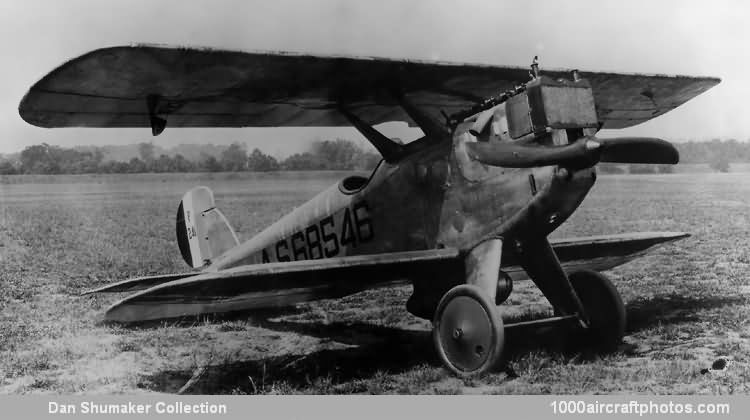09/30/2009. Remarks by Johan Visschedijk: "The D.I single-seat fighter biplane was designed by Claude Dornier at the Zeppelin-Lindau company at Lindau-Reutin. A wooden mockup was inspected by Idflieg on February 11, 1918. Subsequently six aircraft were ordered (allotted s/n D.1750/18 to D.1755/18), the first three fitted with the 160 hp Mercedes D III, the last three fitted with the 185 hp Mercedes D IIIa.
Of all-metal construction with stressed fuselage skinning and cantilever wings of torsion-box construction, and carrying a jettisonable fuel tank beneath the fuselage, this type showed features well ahead of the contemporary state of the art. The D.I would have carried twin synchronized 0.312 in (7.92 mm) machine guns. The first flight was made by the company test pilot Heinz Ruppert in D.1752/18 on 4 June 1918.
During the second fighter competition, held at Berlin between May 27 and mid-July, while flown by Hauptmann Wilhelm Reinhard (commander of Jagdgeschwader I), the D.1751/18 crashed when it shed the upper wing on July 3, 1918, killing the pilot. Just before the aircraft had been flown by Oberst-Leutnant Herman Göring (commander of Jasta 27), Hauptman Curt Schwarzenberger and Leutnant Constantin Krefft.
For the totally destroyed D.1751/18 a replacement aircraft was built with strengthened wing bracing and attachments. It received the s/n D.1751/18 (Ersatz) and participated in the third fighter competition, held October 10 to November 2, 1918. This resulted in an order for 50 aircraft, allotted the s/n D.1900/18 to D.1949/18.
Early 1919, when work was halted on the aircraft production upon enactment of the Armistice agreements, 50% of the aircraft were ready and were hidden from the Inter-Allied Armistice Commission (IAAC).
In 1921, two aircraft were sold to the USA, one was evaluated by the USN, BuNo. A-6058, the other one received the USAAS s/n 68546 and was evaluated at McCook Field under the Project Number "P-241", it was transferred to the McCook Field museum on May 14, 1923, however, it was surveyed on September 8, 1926."
